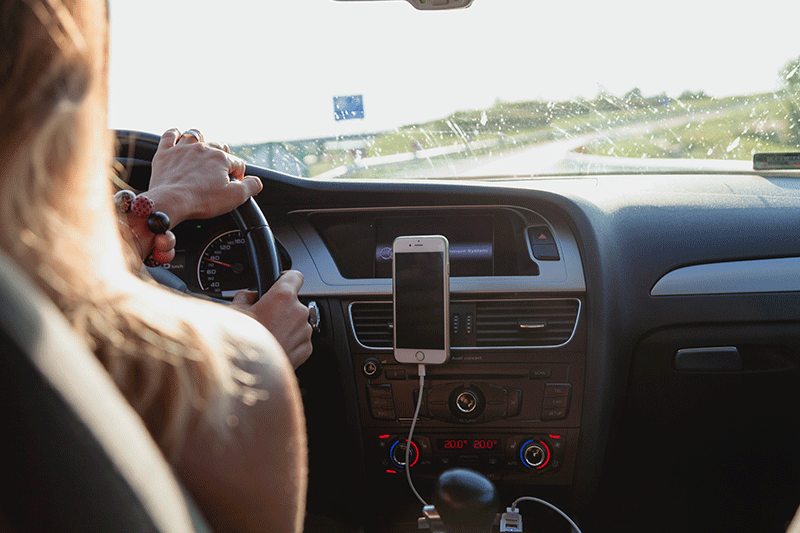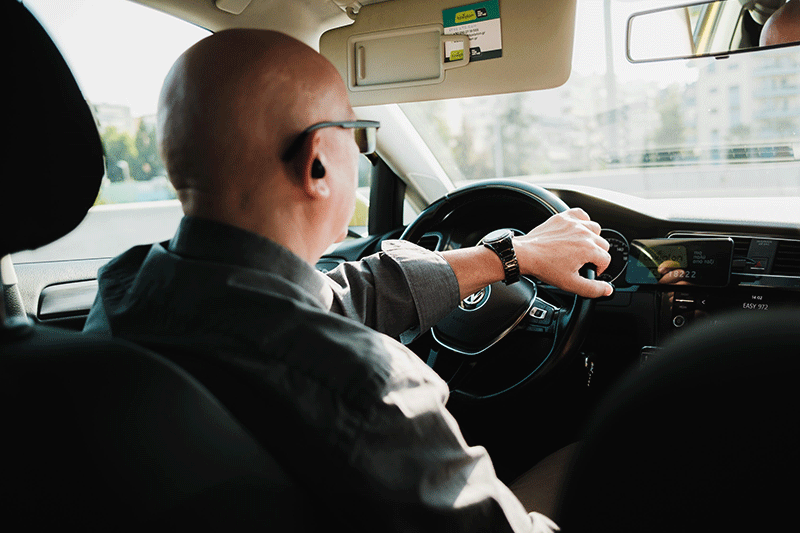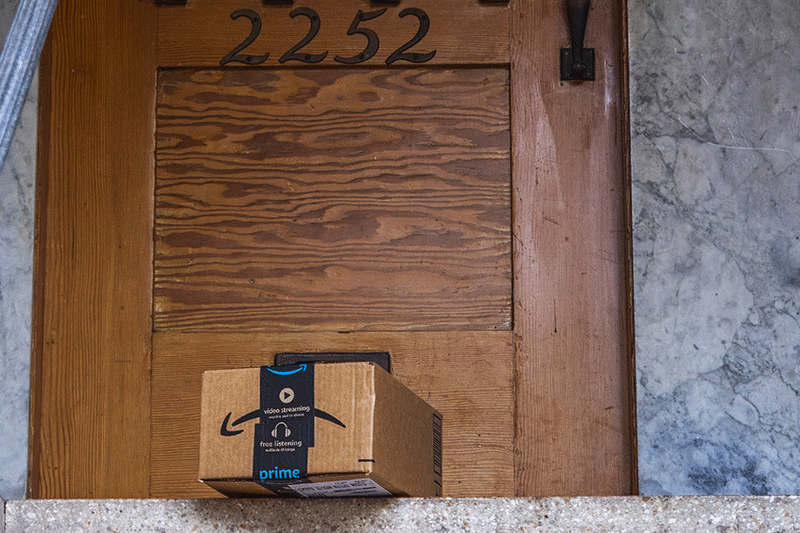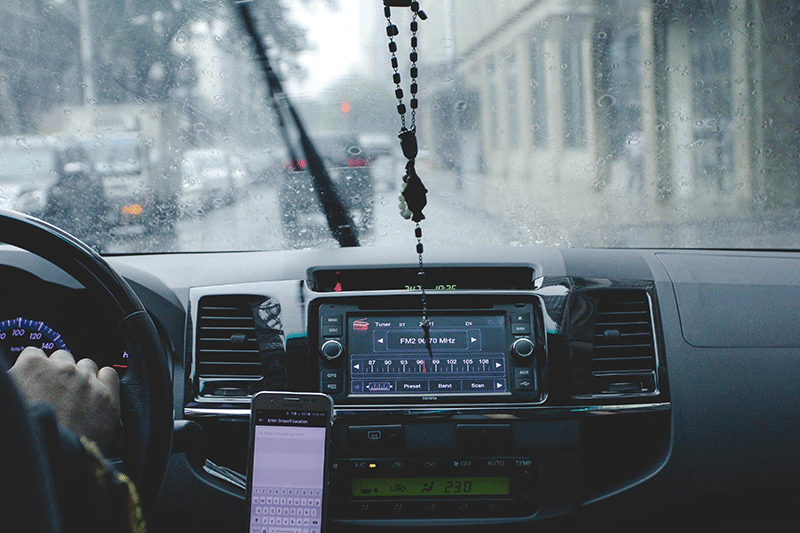The 5 Worst Gig Apps for Making Money: An Insider’s Take
1. DoorDash: More Dash, Less Cash

DoorDash, a popular food delivery app, may not be the best choice for those looking to make a significant income from gig work. One of the primary reasons is that DoorDash pays its drivers, known as Dashers, on a per-delivery basis. This model might seem appealing at first glance, but it means the more deliveries a Dasher completes, the more they earn. If you’re in an area with low demand or during non-peak hours, your earning potential can be severely limited.
Moreover, while DoorDash does offer promotional pay for certain times and areas, these incentives often fall short of offsetting the low base pay. Plus, these promotions are usually available during peak dining times, when traffic is at its worst, thus increasing the time and effort required to complete each delivery. That’s not to mention the wear and tear on the Dasher’s vehicle, which can eat into profits significantly.
In addition, DoorDash uses a tipping system that has been widely criticized. The company previously faced backlash for incorporating tips into Dashers’ base pay, reducing the amount DoorDash had to pay out of pocket. While this policy has changed, the transparency and fairness of the tipping system are still concerns for many Dashers. There’s no guarantee that generous tips will come through to supplement the low base pay.
While DoorDash provides an opportunity for flexible work, the lack of benefits is another major downside. As independent contractors, Dashers don’t have access to health insurance, paid time off, or retirement plans through the company. This lack of security can make the gig less attractive, especially for those who rely on it as their primary source of income.
Lastly, dealing with customer service can often be a frustrating experience for Dashers. Many have reported long wait times and inadequate support when issues arise during deliveries. This lack of support can lead to stress and wasted time, further diminishing the appeal of driving for DoorDash. All these factors combined make DoorDash a less-than-ideal choice for those seeking to make a substantial income from gig work.
2. Uber: Flexibility at a Cost

Uber, a renowned ride-sharing app, may not be the ideal choice for those seeking to earn a significant income from gig work. The primary reason behind this is that Uber drivers are paid per ride, which means that their income is directly tied to the number of rides they can complete. This model can prove to be challenging, especially in areas with low demand or during non-peak hours, as the earning potential can be considerably limited.
In addition, while Uber does offer surge pricing at certain times and locations, these incentives often do not make up for the low base pay. Surge pricing typically occurs during peak demand times when traffic is at its worst, thereby increasing the time and effort required to complete each ride. Furthermore, the wear and tear on the driver’s vehicle, coupled with the cost of gas and maintenance, can significantly reduce overall earnings.
The tipping system that Uber employs is also a pain point for many drivers. While customers have the option to tip their drivers, it is not mandatory and is often overlooked. This lack of consistent tipping can cause earnings to fluctuate wildly and add an element of unpredictability to a driver’s income, making budgeting and financial planning difficult.
Another major shortcoming of driving for Uber is the lack of benefits. As independent contractors, Uber drivers do not have access to company-provided health insurance, paid time off, or retirement plans. This lack of security can make the gig less attractive, especially for those who rely on it as their primary source of income.
Finally, customer service and support can often be a source of frustration for Uber drivers. Many drivers report long wait times and inadequate assistance when issues arise during rides. This lack of support can lead to wasted time and increased stress, further reducing the appeal of driving for Uber. When all these factors are taken into account, it becomes clear why Uber might not be the best choice for those looking to make a substantial income from gig work.
3. TaskRabbit: High Effort, Low Reward

TaskRabbit, a popular gig app that connects individuals with “Taskers” who can help with various tasks, might not be the best option for those looking to make a substantial income. One primary reason is the unpredictable nature of the work. The tasks available on TaskRabbit can vary greatly in terms of time, effort, and pay, making it difficult for Taskers to rely on a consistent income stream.
Furthermore, TaskRabbit takes a significant service fee from each task completed. While this fee goes towards maintaining the platform and providing support services, it reduces the amount of money that goes directly into the Tasker’s pocket. This means that even if a Tasker is able to secure a high-paying job, a substantial portion of their earnings will be deducted.
The bidding system utilized by TaskRabbit can also be a major drawback. Taskers are often competing against each other for jobs, leading them to underbid to secure work. This competition can drive down prices and result in Taskers earning less than they would for similar work outside the platform.
Just like many other gig economy platforms, TaskRabbit does not offer benefits to its Taskers. Since they are considered independent contractors, they do not have access to health insurance, paid leave, or retirement plans through the company. This lack of security and benefits can make the gig less appealing, especially for those who rely on it as their primary source of income.
Finally, TaskRabbit’s customer service has been a point of contention for many Taskers. There have been complaints about a lack of support and slow responses when issues arise. This lack of effective communication can lead to frustration and wasted time, further diminishing the appeal of working with TaskRabbit. Given these reasons, TaskRabbit might not be the ideal choice for those looking to make a substantial income from gig work.
4. Amazon Flex: Not So Flexible

Amazon Flex, an app-based delivery service, may not be the best choice for those looking to make substantial income from gig work. One of the primary reasons is that Amazon Flex drivers are paid per delivery block, which usually lasts for a few hours. While the pay per block might seem appealing at first glance, it’s important to note that the duration of each block can vary greatly, and longer blocks may not necessarily result in higher pay. This means that drivers could end up working longer hours without seeing a significant increase in their earnings.
In addition, while Amazon does provide an estimate of how much drivers can earn per block, these estimates often do not take into account the expenses incurred by drivers. These expenses include fuel, vehicle maintenance, and insurance, all of which can eat into the earnings significantly. As a result, the actual take-home pay for Amazon Flex drivers can be much lower than the advertised rates.
Another major drawback of Amazon Flex is the intense physical demands of the job. Drivers are responsible for loading their own vehicles with packages, which can be both physically taxing and time-consuming. Moreover, during busy periods, drivers may have to deliver a large number of packages within a short timeframe, leading to increased stress and fatigue.
Like many other gig economy platforms, Amazon Flex does not offer benefits to its drivers. Since they are considered independent contractors, they do not have access to health insurance, paid leave, or retirement plans through the company. This lack of security and benefits can make the gig less appealing, especially for those who rely on it as their primary source of income.
Lastly, securing delivery blocks on Amazon Flex can be challenging due to high competition among drivers. Many drivers have reported difficulty in getting blocks, especially during non-peak hours. This unpredictability in work availability can lead to inconsistent earnings, making it difficult for drivers to rely on Amazon Flex as a steady source of income. Given these reasons, Amazon Flex might not be the ideal choice for those looking to make a substantial income from gig work.
5. Lyft: Driving Down Profits

Lyft, one of the most recognized ride-sharing platforms, may not be the ideal gig work app for those aiming to earn substantial income. One reason is the inconsistency in earnings. Drivers are paid per ride, and the demand for rides can drastically vary depending on time of day, day of the week, and location. This unpredictability makes it challenging for drivers to estimate their income and budget accordingly.
Additionally, the expenses associated with driving for Lyft can significantly cut into earnings. Costs such as fuel, vehicle maintenance, insurance, and depreciation are all out-of-pocket expenses that drivers must bear. Consequently, the net income for Lyft drivers can end up being much less than initially anticipated, which makes the job less profitable.
Furthermore, Lyft’s surge pricing feature, which allows drivers to earn more during peak hours, cannot be relied upon for consistent income. These surge periods are unpredictable and fleeting, meaning drivers cannot count on them for regular, increased earnings. Outside of these peak times, rates drop, leading to lower earnings for a substantial amount of work.
Another major disadvantage of driving for Lyft is the lack of benefits. As independent contractors, Lyft drivers are not entitled to benefits such as health insurance, paid leave, or retirement plans, which are typically offered in traditional employment settings. This lack of job security and benefits can make the gig less attractive, particularly for those who depend on it as their primary source of income.
Finally, the level of customer service support provided by Lyft to its drivers often leaves much to be desired. Many drivers report long wait times and insufficient assistance when they encounter issues or disputes with passengers. This lack of support can lead to increased stress and lost time, further reducing the attractiveness of driving for Lyft as a gig job. Given these reasons, Lyft may not be the best choice for those looking to make a significant income from gig work.
Why You Should Not Be Using Gig Apps To Make Money
Gig economy apps, including those for ride-sharing, food delivery, and freelance work, have grown in popularity over the years. However, there are several reasons why relying on these platforms for income might not be the best choice. First and foremost, earnings can be unpredictable. Since most gig apps pay per task or project, your income can fluctuate greatly depending on demand, competition, and other factors. This lack of stability can make it difficult to budget and plan financially.
Secondly, gig work often comes with high out-of-pocket expenses. For instance, if you’re using a car for a ride-share or delivery service, you’ll need to cover costs like gas, maintenance, insurance, and depreciation. These expenses can significantly cut into your earnings, sometimes making the job less profitable than it initially seems.
Thirdly, gig apps typically classify workers as independent contractors rather than employees. This means that you won’t have access to benefits such as health insurance, paid sick days, or retirement plans. You’ll also be responsible for handling your own taxes, which can be complex and time-consuming. This lack of job security and benefits can make gig work risky, especially if it’s your primary source of income.
Furthermore, gig work can often be demanding and stressful. You might have to deal with difficult customers, work long hours, or perform tasks that are physically challenging. Depending on the app, you may also face pressure to maintain high ratings and complete tasks quickly. This can lead to a high-stress work environment that impacts your mental and physical health.
Finally, while gig apps can offer flexibility, this can sometimes turn into an expectation of constant availability. With many of these apps, the more available you are, the more work you get. This can blur the lines between work and personal time, making it hard to achieve a healthy work-life balance. All things considered, while gig apps can provide an opportunity to earn money on your own terms, they also come with significant drawbacks that should be carefully considered.
In Conclusion: The 5 Worst Gig Apps For Making Money
While gig economy apps like DoorDash, Uber, TaskRabbit, Amazon Flex, and Lyft may seem like easy ways to make money, they often fail to deliver consistent, worthwhile income. It’s crucial to consider these potential downsides before signing up for these gigs. Find out 50 different ways to make $100 dollars a day.

